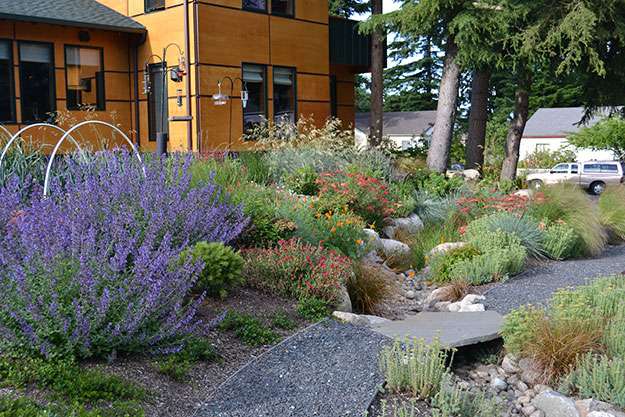Renovating one’s home is an experience filled with optimism and trepidation alike.
While interiors take center stage, it is the often unglamorous world of plumbing that holds a trump card.
Implementing water-saving measures can reduce costs and promote environmental well-being.
This post will shine a light on making informed decisions as water-wise renovations gain momentum.
Go with the Flow: Understanding New Plumbing Choices
With renovations come decisions, and plumbing options abound.
Beyond a mere replacement of pipes and faucets lies the potential of systemic upgrades.
Tankless water heaters promise endless hot water on demand, minimizing wasteful heat loss.
Additionally, graywater systems permit the safe reuse of water from bathrooms and laundry.
Such measures promote resource conservation while trimming utility expenses.
Engaging with skilled professionals during a home renovation can uncover unexpected opportunities to optimize water use.
By being knowledgeable about options like dual-flush toilet systems or smart showerheads, homeowners can make choices that align with both their lifestyle and environmental goals.
Finding solutions tailored to specific needs ensures each drop counts.
As you plan your renovation, knowing where to turn for plumbing repair services can be a significant part of the process.
Using trusted local services like Nichols Mechanical is the best option to ensure the integrity of your home’s plumbing, and protects against potential disruptions.
The Digital Advocate
While technology has seeped into all facets of life, it plays an especially potent role in managing water.
Homeowners may install smart meters to monitor usage and detect abnormalities.
This virtual oversight lets residents adjust habits by seeing real-time consumption patterns.
Automation solutions stand poised to transform irrigation duties, providing water only when necessary, optimizing nurturing with informed precision.
Integrating digital systems doesn’t limit itself to indoor usage.
Outdoor innovations such as weather-responsive irrigation systems automatically adjust watering schedules based on local weather patterns.
Thus, irrigation becomes aligned with environmental conditions, furthering the aim of water conservation even during periods of drought or heavy rain.
Water Conservation: A Duty for the Homeowner
Water is a precious resource, yet waste is a hallmark of modern living.
Leaky faucets, inefficient appliances, and outdated systems only add insult to injury.
A conscientious approach is necessary. Homeowners need not remain passive participants in water wastage.
Retrofits, like low-flow toilets and aerators, can lead to a significant reduction in consumption.
Consider that installing such devices could cut residential water usage by 20% overnight.
For homeowners committed to water conservation, researching municipal programs offering rebates or incentives for water-saving installations can be worthwhile.
These programs often provide financial relief for installing rainwater harvesting systems or replacing old appliances with water-efficient alternatives.
These support structures not only reduce upfront costs but also encourage widespread adoption of environmentally sustainable practices.
An Ounce of Prevention
Benjamin Franklin’s adage asserts, “An ounce of prevention is worth a pound of cure.” Inspection constitutes the first defense against costly water damage.
Over time, pipes may corrode, joints will degrade, and systems will fall into disrepair.
Timely intervention for vulnerabilities can prevent hidden leaks from blossoming into financial burdens.
Enlist a licensed plumber for a once-over to identify and remedy problems before walls pay the price.
The Art of Landscaping Without a Guzzler
Decorative ponds and lush lawns are a likely canvas for landscape architects.
Nonetheless, these standard features guzzle large volumes of water.
The discerning homeowner embarks on xeriscaping—a novel method of design utilizing local plants adapted to the climate.
With vibrant succulents and native grasses, once thirsty plots become models of restraint. A well-designed xeriscape flaunts a diverse ecosystem with minimal input.
The benefits of xeriscaping extend beyond water savings.
By reducing the reliance on water-intensive sections, homeowners find themselves investing less time and resources into maintenance.
Drought-tolerant plants generally require less fertilizer and pesticides, reducing chemical use and promoting a healthier garden ecosystem.
Letting nature dictate the landscape results in a harmonious and sustainable outdoor aesthetic.
Challenges and Resilience
Renovation isn’t devoid of challenges.
Plumbing costs can be daunting and transitions disruptive.
Yet, resilience is a hallmark of savvy homeowners.
They view hurdles as opportunities, gaining reward in utility bill reductions and joy in environmental stewardship.
Successful transformations occur with thorough planning, flexibility to navigate unexpected obstacles, and a commitment to sustainable living choices.
In embracing these water-wise renovations, homeowners also become advocates within their communities. Sharing experiences and successes with neighbors and friends can spark interest and inspire others to undertake their own water-conserving projects.
In this way, individual efforts contribute to the broader goal of community-wide sustainability, proving that commitment to resource conservation is both beneficial and contagious.
Conclusion
Water wisdom is synonymous with judicious renovations.
The modern homeowner is empowered not only to overhaul aesthetics but to integrate solutions that champion conservation.
As calls for resource efficiency mount, homes become actors in a narrative that blazes towards sustainability.
Taking charge of water usage not only enriches personal spaces but also ensures a legacy of pragmatic yet pioneering transformation.

